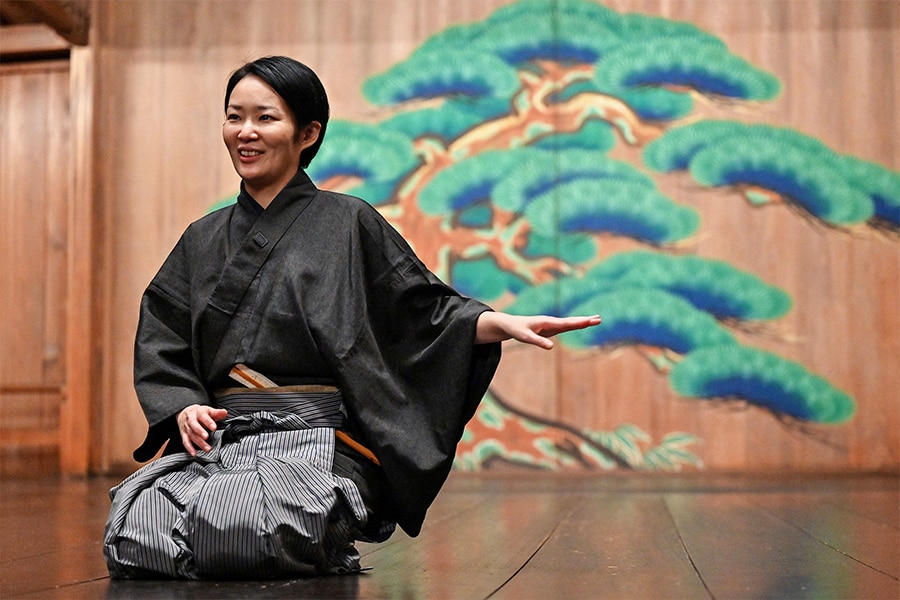
Women break into Japan's 'masculine' Noh theatre
Noh, with its elaborate layered costumes and hand-crafted masks, is one of the most ancient surviving forms of theatre, with origins dating back to the eighth century
 Mayuko Kashiwazaki speaking during an interview with AFP following a rehearsal for the principle role in "Dojoji" Mayuko Kashiwazaki speaking during an interview with AFP following a rehearsal for the principle role in "Dojoji"
Image: Richard A. Brooks / AFP
Mayuko Kashiwazaki speaking during an interview with AFP following a rehearsal for the principle role in "Dojoji" Mayuko Kashiwazaki speaking during an interview with AFP following a rehearsal for the principle role in "Dojoji"
Image: Richard A. Brooks / AFP
Kimono-clad Mayuko Kashiwazaki delivers her lines in guttural tones and transforms into an evil snake in the lead role of a Japanese Noh play where, unusually, most of the cast are women.
Noh, with its elaborate layered costumes and hand-crafted masks, is one of the most ancient surviving forms of theatre, with origins dating back to the eighth century.
Unlike kabuki, another type of classical Japanese theatre, or sumo wrestling—both steadfastly male— Noh has been open to performers of both genders for over a century.
But women are still a rarity in the traditional Noh world, where fathers often pass the vocation to their sons.
Women represent just 15 percent of the 1,039 actors and musicians registered with the professional Nohgaku Performers' Association.







